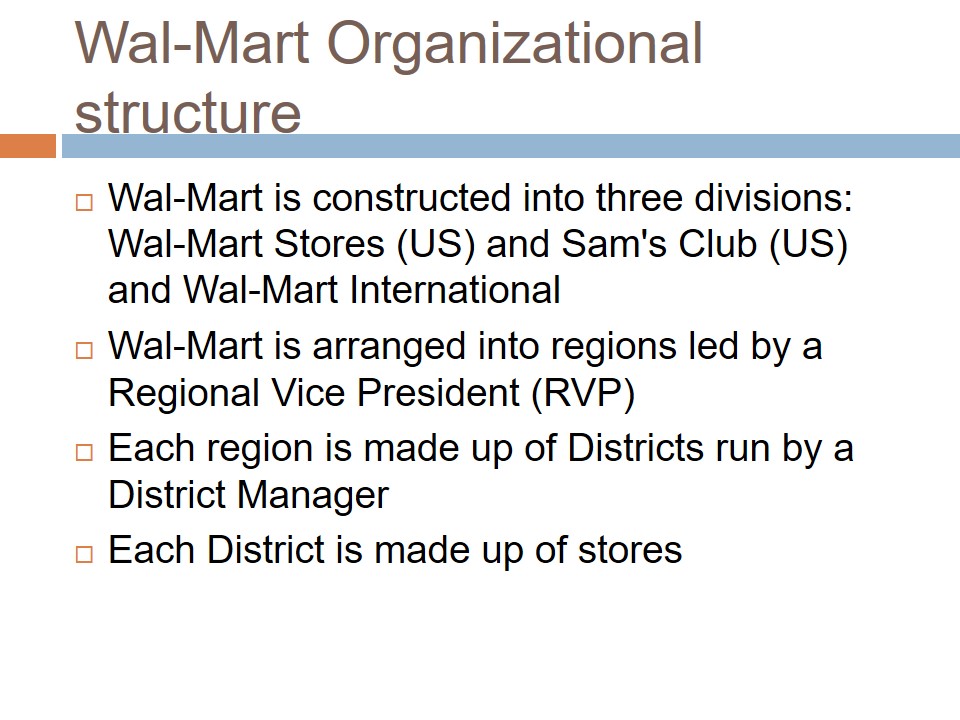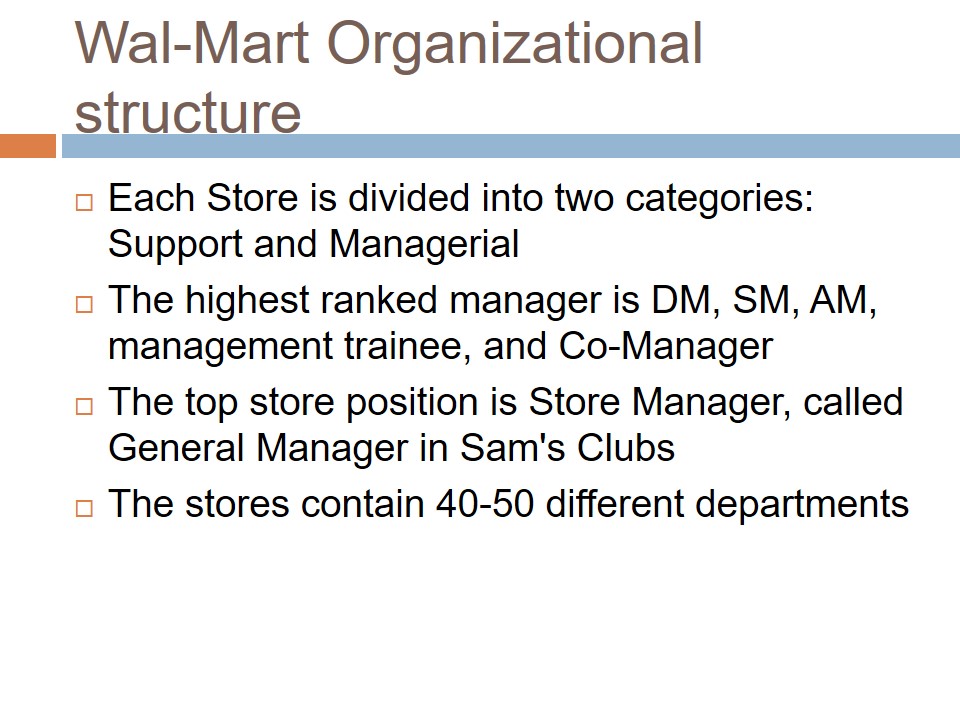- Wal-Mart is constructed into three divisions: Wal-Mart Stores (US) and Sam’s Club (US) and Wal-Mart International.
- Wal-Mart is arranged into regions led by a Regional Vice President (RVP).
- Each region is made up of Districts run by a District Manager.
- Each District is made up of stores.
- Each Store is divided into two categories: Support and Managerial.
- The highest ranked manager is DM, SM, AM, management trainee, and Co-Manager.
- The top store position is Store Manager, called General Manager in Sam’s Clubs.
- The stores contain 40-50 different departments.
Sam’s Club is a chain of warehouse clubs which sell groceries and general merchandise, often in large quantities.
There are a total of 41 Wal-Mart regions, each with it’s own Regional Vice-President who works out of Bentonville.
Each region has approximately 11 districts and each district has around eight stores.
Each region, in turn, contains approximately eleven districts; each district contains approximately six to eight stores.
Each district is run by a District Manager.
At Sam’s Club, district managers are called Directors of Operations, but the job responsibilities are identical.
District Managers work in conjunction with Regional Personnel Managers (RPM) on personnel matters.
Managers:
The top manager is the Department Manager (DM) followed by Support Manager (SM), Assistant Manager (AM), management trainee, a four-to-five month program which prepares employees for positions as Assistant Managers, and finally Co-Manager, a position used only in larger stores.
Other hourly supervisor positions include Customer Service Manager (CSM), known as Check-Out Supervisor (COS) at Sam’s Club.
Each store has several Assistant Managers, varying with the size of the store.
Stores:
The top store position is Store Manager, called General Manager in Sam’s Clubs.
The stores contain 40-50 different departments.


Comparison with other Structures
- Starbucks operates under four U.S. divisions as compared to Wal-Mart’s two (in the US).
- Unilever operates in three divisional regions, two product segments, and five functional segments.
Starbucks operates under four U.S. divisions: Western/Pacific, Northwest/Mountain, Southeast/Plains and Northeast/Atlantic. This kind of organizational structure enables maximized communication channels.
